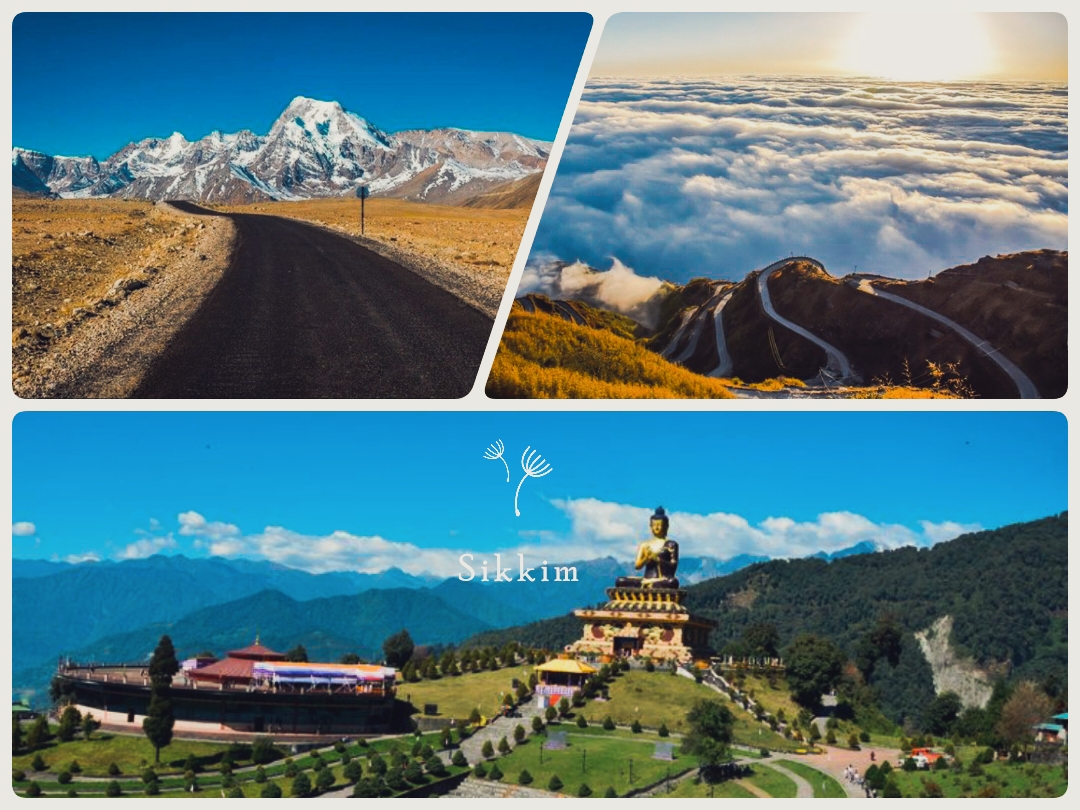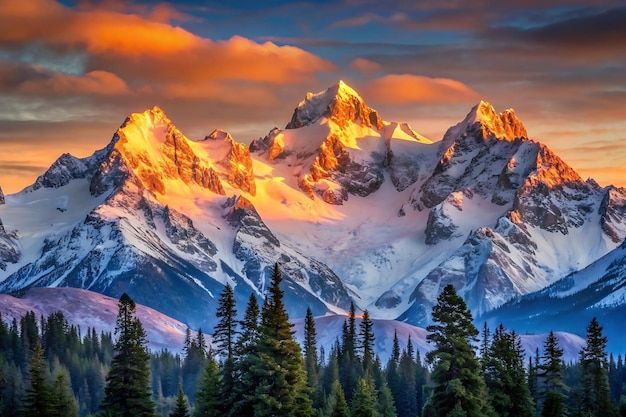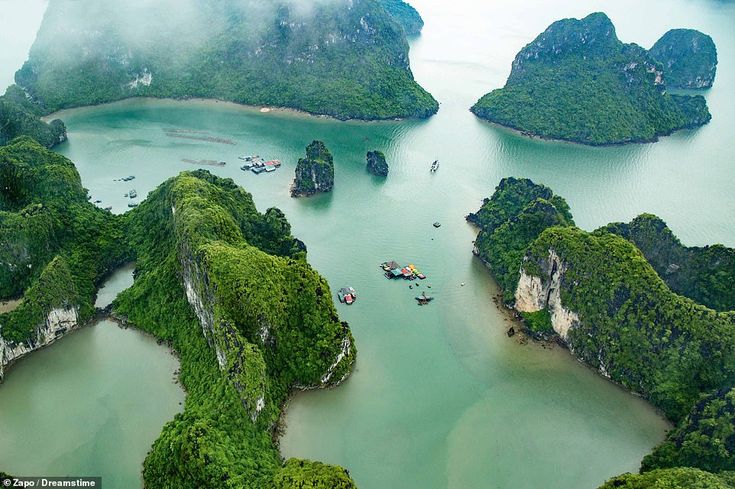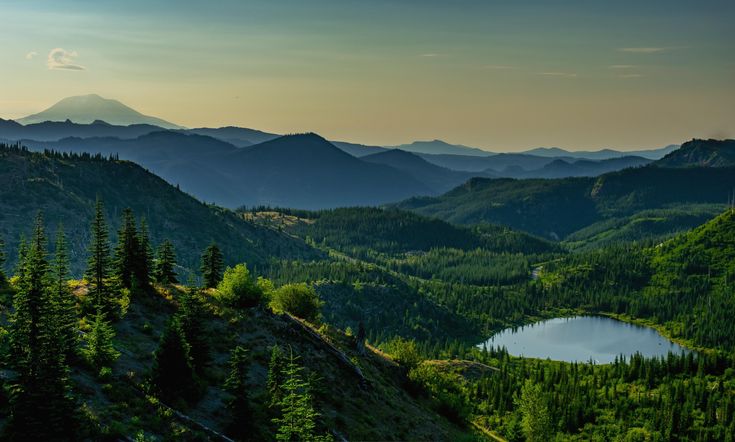
Best places to visit in India
June 16, 2025
Explore the World’s Most Beautiful Travel Destinations
June 19, 2025The best Indian beautiful travelling place :-
There are some beautiful places to visit in India, including Meghalaya, Uttarakhand, Andaman and Nicobar Islands, Sikkim, and Tamil Nadu. There are many more beautiful places to visit, which are detailed in the blog itself…………
The writer name of shoubhik maity
Table of Contents

1. Meghalaya-(The Abode of Clouds)
Meghalaya, meaning “Abode of Clouds” in Sanskrit, is a stunning state in northeastern India, known for its dramatic landscapes, rich tribal culture, and unique biodiversity. Bordered by Assam and Bangladesh, Meghalaya is a paradise for nature lovers and adventure travelers.
Its capital, Shillong, often called the “Scotland of the East,” offers colonial architecture, lively markets, and a pleasant climate. The state is famed for Cherrapunji and Mawsynram, among the wettest places on Earth, featuring lush greenery, waterfalls, and living root bridges—an extraordinary example of bioengineering by the Khasi people.
With its unspoiled natural beauty, warm hospitality, and vibrant culture, Meghalaya offers an unforgettable travel experience for those seeking both tranquility and adventure.
2. Cherrapunji-(The Land of Living Root Bridges and Rain)
Cherrapunji, located in the East Khasi Hills of Meghalaya, India, is one of the wettest places on Earth, receiving rainfall almost year-round. Also known locally as Sohra, it is famous for its dramatic landscapes, lush greenery, and unique living root bridges, created by the Khasi tribe using the roots of rubber trees.
For travelers, Cherrapunji offers a blend of natural wonders and cultural experiences. Attractions include the Nohkalikai Falls (India’s tallest plunge waterfall), Mawsmai Caves, Seven Sisters Falls, and panoramic viewpoints over the Bangladesh plains. The region also features sacred groves, limestone caves, and rich biodiversity.
Ideal for eco-tourism and adventure seekers, Cherrapunji has a pleasant climate, with misty hills and cool temperatures. Visitors can enjoy trekking, cave exploration, and learning about indigenous Khasi traditions. Despite heavy rainfall, the best time to visit is between October and May, when the weather is clearer. Cherrapunji is accessible by road from Shillong (about 2 hours away), making it a must-visit destination in Northeast India.
3. Dawki-(Crystal Waters and Border Charm)
Dawki is a picturesque town located in the West Jaintia Hills district of Meghalaya, India, near the border with Bangladesh. It is best known for the Umngot River, which is famed for its crystal-clear water, so transparent that boats appear to float in the air. Dawki serves as a key trade route between India and Bangladesh, but it has also gained popularity as a serene travel destination.
For travelers, Dawki offers breathtaking landscapes, boat rides on the Umngot River, and scenic drives through the lush hills of Meghalaya. The Dawki Bridge, a suspension bridge built in 1932 by the British, adds historical charm. Nearby villages like Shnongpdeng offer adventure activities such as kayaking, snorkeling, cliff jumping, and camping by the riverside. The best time to visit is from October to April, when the weather is pleasant and the river is at its clearest.
Dawki is ideal for nature lovers, adventure enthusiasts, and photographers seeking a peaceful escape with unmatched natural beauty.
4. Shillong-(The Scotland of The East)
Shillong, the capital of Meghalaya in northeastern India, is a charming hill station often called the “Scotland of the East” due to its rolling hills, cool climate, and colonial-era architecture. Nestled at an altitude of about 1,496 meters (4,908 feet), it offers a refreshing escape with pine-covered hills, cascading waterfalls, and scenic vistas. Popular attractions include Elephant Falls, Umiam Lake, and Shillong Peak, the highest point in the state, offering panoramic views of the city.
Shillong is also known for its vibrant music scene, local Khasi culture, bustling markets, and delicious street food. It’s an excellent base for exploring nearby destinations like Cherrapunji, Mawlynnong (Asia’s cleanest village), and Dawki with its crystal-clear river. The best time to visit is between October and April, when the weather is pleasant. With a blend of natural beauty, cultural richness, and urban charm, Shillong is a must-visit for travelers seeking tranquility, adventure, and local experiences in Northeast India.

5. Uttarakhand- (The Land of Gods and Natural Wonders)
Uttarakhand is a picturesque state in northern India, often referred to as the “Land of the Gods” (Devbhumi) due to its many Hindu pilgrimage sites. Nestled in the Himalayan foothills, it is known for its breathtaking natural beauty, snow-capped mountains, lush valleys, serene rivers, and spiritual significance.
The state is divided into two regions: Garhwal and Kumaon, both offering rich cultural heritage, scenic landscapes, and adventure opportunities. Key pilgrimage destinations include Haridwar, Rishikesh, Kedarnath, Badrinath, Yamunotri, and Gangotri, forming the famous Char Dham Yatra. Rishikesh, also known as the Yoga Capital of the World, attracts spiritual seekers and yoga enthusiasts globally.
Uttarakhand is also a paradise for nature lovers and adventure tourists, offering trekking, white-water rafting, camping, wildlife safaris, and skiing. Popular hill stations like Mussoorie, Nainital, Auli, and Chopta draw thousands of visitors for their pleasant climate and stunning views.
With rich biodiversity, sacred rivers like the Ganga and Yamuna, and national parks like Jim Corbett, Uttarakhand is a perfect travel destination that combines spirituality, adventure, and natural wonder.
In travel and tourism, the value of flowers refers to the cultural, aesthetic, economic, and ecological importance that flowers contribute to a destination. Here’s a full definition tailored for travel:
6. Valley of Flowers-(A Himalayan Paradise in Bloom)
The Valley of Flowers is a stunning high-altitude national park located in the Chamoli district of Uttarakhand, India. Nestled in the Western Himalayas at an elevation ranging from 3,300 to 3,600 meters above sea level, this enchanting valley is renowned for its breathtaking natural beauty and rich biodiversity. Spanning over 87 square kilometers, it forms part of the Nanda Devi Biosphere Reserve and was declared a UNESCO World Heritage Site in 2005. The valley is known for its lush meadows that burst into a vibrant carpet of color during the monsoon season, typically from July to early September. During this time, over 600 species of alpine flowers bloom in abundance, including rare and exotic varieties like blue poppies, orchids, marigolds, primulas, and anemones.
Apart from its floral diversity, the Valley of Flowers is also home to many rare and endangered animals such as the snow leopard, Asiatic black bear, Himalayan musk deer, and red fox. Birdwatchers can spot the colorful Himalayan monal, the state bird of Uttarakhand. The valley also holds great cultural and mythological importance. It is believed that this was the place where Hanuman found the Sanjeevani herb to revive Lakshmana in the epic Ramayana. Trekkers and nature lovers can reach the valley by undertaking a moderately challenging trek that starts from Govindghat. The trek covers a distance of about 17 kilometers via Ghangaria, which serves as the last human settlement before the park.
7. Rishikesh-(The Yoga Capital of the World)
Rishikesh is a spiritual town in the northern Indian state of Uttarakhand, nestled in the foothills of the Himalayas along the banks of the sacred Ganges River. Known as the “Yoga Capital of the World,” it attracts travelers and spiritual seekers from across the globe for yoga, meditation, and wellness retreats. The town is dotted with ancient temples, ashrams, and ghats, with famous landmarks like Laxman Jhula and Ram Jhula footbridges offering panoramic views of the river and hills.
Rishikesh is also a hub for adventure tourism, offering thrilling activities like white-water rafting, trekking, camping, bungee jumping, and rock climbing. Its serene atmosphere, clean air, and spiritual energy make it an ideal escape for those seeking both peace and adventure. Alcohol and non-vegetarian food are banned in the city, reflecting its sacred status. Whether you’re there to deepen your spiritual practice, explore nature, or enjoy extreme sports, Rishikesh offers a unique and enriching travel experience.
8. Auli-(The Skiing Paradise of India)
Auli is a picturesque hill station and skiing destination located in the Chamoli district of Uttarakhand, India, in the Garhwal Himalayas. Sitting at an altitude of around 2,500 to 3,050 meters (8,200 to 10,000 feet), Auli is renowned for its snow-covered slopes, dense oak and coniferous forests, and panoramic views of Himalayan peaks such as Nanda Devi, Mana Parvat, and Kamet.
Auli is a popular travel destination for both winter sports enthusiasts and nature lovers. In winter (December to March), it becomes a hub for skiing, snowboarding, and snow trekking. The Auli Ski Resort and the Auli Artificial Lake add to its appeal, with skiing festivals and training courses organized regularly. The Auli Ropeway, one of the longest and highest in Asia, connects it to Joshimath and offers spectacular aerial views of the mountains.
In summer and spring, Auli transforms into a lush green meadow with hiking trails, camping spots, and access to nearby attractions like Valley of Flowers, Hemkund Sahib, and Nanda Devi National Park.

9. Andaman and Nicobar Islands-(India’s Tropical Paradise)
The Andaman and Nicobar Islands are a stunning group of over 500 islands located in the Bay of Bengal, forming a Union Territory of India. Known for their pristine beaches, crystal-clear waters, lush tropical forests, and vibrant coral reefs, these islands are a paradise for nature lovers and adventure seekers.
Travel Highlights:
Port Blair: The capital city, known for the historic Cellular Jail, a colonial-era prison turned museum.
Havelock Island (now Swaraj Dweep): Famous for Radhanagar Beach, often rated among the best in Asia, as well as excellent snorkeling and scuba diving at sites like Elephant Beach.
Neil Island (Shaheed Dweep): Known for its tranquility, natural rock formations, and coral reefs.
Baratang Island: Features natural limestone caves and mud volcanoes.
Ross Island: Offers a glimpse into the British colonial past with ruins and scenic views.
Activities include scuba diving, snorkeling, sea walking, kayaking, and glass-bottom boat rides to explore vibrant marine life. The islands also offer trekking, bird watching, and cultural experiences with indigenous tribes (note: access to tribal areas is restricted to protect their way of life).
Best time to visit: October to May, when the weather is pleasant and ideal for water activities.
With a mix of adventure, history, and natural beauty, the Andaman and Nicobar Islands are an unforgettable destination for eco-tourism, honeymooners, and families alike.
10. Radhanagar Beach-(Asia’s Best Beach)
Radhanagar Beach, located on Havelock Island (now known as Swaraj Dweep) in the Andaman and Nicobar Islands of India, is one of the most beautiful and pristine beaches in Asia. Often ranked among the best beaches in the world—including a top spot by Time Magazine—Radhanagar Beach is known for its powdery white sand, crystal-clear turquoise waters, and lush green surroundings. It stretches over 2 kilometers and offers a serene, uncrowded atmosphere perfect for relaxation.
Ideal for swimming, sunbathing, photography, and romantic walks, the beach is also close to coral reefs for snorkeling and diving. With strict environmental controls, Radhanagar Beach remains unspoiled, making it a must-visit destination for eco-conscious travelers and beach lovers seeking tranquility. Sunset views here are especially breathtaking, creating a truly unforgettable experience.
11. Havelock Island-(A Tropical Paradise in India)
Havelock Island, officially known as Swaraj Dweep, is one of the most beautiful and popular islands in the Andaman and Nicobar archipelago, located in the Bay of Bengal, India. Renowned for its pristine white sandy beaches, crystal-clear turquoise waters, and vibrant coral reefs, it is a paradise for nature lovers, snorkelers, and scuba divers. The island offers tranquil surroundings with lush green forests and diverse marine life, making it ideal for relaxation and adventure. Famous beaches like Radhanagar, Vijay Nagar, and Elephant Beach attract tourists worldwide. Havelock Island provides excellent facilities for water sports, trekking, and eco-tourism, making it a must-visit destination for travelers seeking natural beauty and tranquility.
12. Port Blair-(The Gateway to the Andaman Islands)
Port Blair is the capital city of the Andaman and Nicobar Islands, a group of islands in the Bay of Bengal, India. It serves as the main gateway for travelers exploring this tropical paradise. Known for its pristine beaches, clear turquoise waters, and rich marine life, Port Blair offers a mix of natural beauty and historical significance. Key attractions include the Cellular Jail, a colonial-era prison turned national memorial, and Corbyn’s Cove Beach. The city is also the starting point for trips to nearby islands like Havelock and Neil, famous for snorkeling, scuba diving, and vibrant coral reefs, making Port Blair a must-visit destination for nature and history enthusiasts.

13. Sikkim-(The Hidden Gem of The Eastern Himalayas)
Sikkim is a small, picturesque state in northeastern India, nestled in the eastern Himalayas. Known for its stunning natural beauty, rich biodiversity, and peaceful atmosphere, Sikkim is a top travel destination for nature lovers, trekkers, and cultural enthusiasts.
Attractions:
Gangtok: The capital city offers a mix of modern comforts and traditional charm, with attractions like MG Road, Rumtek Monastery, and Tashi Viewpoint.
Tsomgo Lake: A glacial lake located near the Indo-China border, it is especially beautiful in winter and spring.
Yumthang Valley: Known as the “Valley of Flowers,” it’s covered in blooms during spring and surrounded by snow-clad mountains.
Pelling: A serene town with breathtaking views of Kanchenjunga, and sites like Pemayangtse Monastery and Rabdentse Ruins.
Nathula Pass: A historic Indo-China trade route at high altitude, accessible to Indian tourists with a permit.
Culture:
Sikkim has a unique blend of Lepcha, Bhutia, and Nepali cultures. It is predominantly Buddhist, with many ancient monasteries such as Rumtek, Pemayangtse, and Tashiding. Festivals like Losar, Saga Dawa, and Pang Lhabsol reflect its vibrant spiritual heritage.
Activities:
Travelers can enjoy trekking, river rafting, mountain biking, paragliding, and birdwatching. Sikkim is also a hub for eco-tourism and spiritual retreats.
Travel Tips:
Best time to visit: March to June and September to December.
Permits: Certain areas require Inner Line Permits (ILP) or special permits, especially for foreign tourists.
Connectivity: Nearest airport is Pakyong Airport, or Bagdogra Airport in West Bengal; nearest railway station is New Jalpaiguri (NJP).
Sikkim offers a peaceful, enriching travel experience with its pristine landscapes, warm hospitality, and deep-rooted culture—ideal for those seeking both adventure and tranquility.
14. Tsomgo Lake-(A Jewel in the Eastern Himalayas)
Tsomgo Lake, also known as Changu Lake, is a glacial lake located at an altitude of about 3,753 meters (12,313 feet) in the East Sikkim district of India, approximately 40 km from Gangtok, the state capital. It is one of the most popular and scenic tourist destinations in Sikkim, especially known for its breathtaking high-altitude beauty.
Key Highlights for Travelers:
Scenic Beauty: Surrounded by steep snow-covered mountains, Tsomgo Lake offers a stunning and serene landscape that changes with the seasons. In winter, the lake freezes over and is covered with snow, while in spring and summer, it is surrounded by blooming rhododendrons and alpine flowers.
Cultural Significance: The lake is considered sacred by the Buddhist and Hindu communities of the region. Local legends and spiritual practices are deeply tied to its waters, and it is believed that lamas once predicted the future by observing the lake’s color.
Wildlife and Nature: The lake and its surrounding area are home to various species such as the red panda, Brahminy ducks, and other migratory birds, making it a great spot for nature enthusiasts.
Yaks and Rides: Tourists can enjoy yak rides around the lake, a unique experience especially popular among families and children.
Travel Requirements: Since the lake is close to the Indo-China border, a special permit (Protected Area Permit) is required for Indian nationals, which can be arranged by local travel agents. Foreign nationals are not allowed to visit Tsomgo Lake.
Best Time to Visit: The ideal time to visit is from March to May for flowers and mild weather, or October to December for snow. Winters can be harsh and access may be limited due to snowfall.
Tsomgo Lake is a must-visit destination for those exploring Sikkim, offering a perfect blend of natural beauty, cultural depth, and adventure.
15. Yumthang Valley-(The Valley of Flowers in Sikkim)
Yumthang Valley, often called the “Valley of Flowers,” is a breathtaking destination in the North Sikkim district of India, located at an altitude of around 3,564 meters (11,693 feet) above sea level. Surrounded by snow-capped Himalayan peaks, lush green slopes, and vibrant rhododendron forests, the valley is a nature lover’s paradise and a popular travel destination.
Key Travel Highlights:
Flora and Fauna: Yumthang is famous for its wide variety of alpine flowers, especially rhododendrons, which bloom from late March to mid-June. The valley is part of the Shingba Rhododendron Sanctuary, home to over 24 species of rhododendrons.
Best Time to Visit:
Spring/Summer (March–June): Ideal for viewing flowers and green landscapes.
Winter (November–February): The valley is covered in snow, offering spectacular snowy views, though access can be limited.
Hot Springs: Near the valley, travelers can visit natural hot springs known for their healing properties, adding a relaxing
element to the trip.
Zero Point (Yumesamdong): Located about 25 km further from Yumthang, this spot offers stunning views of the Indo-China border region and is often included in tours.
Accessibility: Yumthang is about 140 km from Gangtok, the capital of Sikkim. The journey typically involves a stay at Lachung, a picturesque village that serves as a base for valley visits.
Travel Tips:
Permits are required for Indian nationals and foreign tourists due to the proximity to the international border.
Altitude sickness can be a concern; acclimatization is advised.
Weather is unpredictable; warm clothes and waterproof gear are essential.
Yumthang Valley is a must-visit for those seeking natural beauty, serenity, and a glimpse of high-altitude Himalayan landscapes untouched by modern development.
16. Nathula Pass-(Gateway to the Indo China Border)
Nathula Pass is a high-altitude mountain pass in the Eastern Himalayas, located at an elevation of about 4,310 meters (14,140 feet) above sea level. It lies on the Indo-China border in the Indian state of Sikkim, connecting Gangtok (the capital of Sikkim) with Tibet’s Chumbi Valley. Once part of the ancient Silk Route, Nathula holds historical and strategic importance.
For travelers, Nathula Pass offers a unique and thrilling experience, featuring snow-capped peaks, stunning landscapes, and a chance to witness a functioning international border post. Visitors can also see Indian and Chinese soldiers stationed at their respective posts, just meters apart.
Travel Tips:
Permit Required: Only Indian nationals are allowed, and special permits must be obtained in advance through a registered travel agent in Gangtok.
Best Time to Visit: May to October (summer and early autumn); winters are harsh with heavy snowfall.
Altitude Caution: Due to high altitude, travelers should be cautious of altitude sickness and carry warm clothing.
Nearby Attractions: Tsomgo Lake, Baba Harbhajan Singh Temple, and the war memorial.
Nathula Pass is a rare blend of natural beauty, patriotism, and historical depth, making it a memorable travel destination for those visiting Sikkim.

17. Tamil Nadu-(Land of Temples, Culture, and Coastal Beauty)
Tamil Nadu is a vibrant state in southern India known for its rich cultural heritage, ancient temples, scenic landscapes, and diverse traditions. Bordered by the Bay of Bengal, it offers a captivating mix of history, spirituality, and natural beauty, making it a top travel destination.
Travelers to Tamil Nadu can explore:
Ancient Temples: The state is home to some of the world’s oldest and most magnificent Dravidian-style temples, like the Meenakshi Temple in Madurai, Brihadeeswarar Temple in Thanjavur, and Shore Temple in Mahabalipuram, many of which are UNESCO World Heritage Sites.
Cultural Heritage: Tamil Nadu is a cradle of classical music, Bharatanatyam dance, Tamil literature, and rich festivals like Pongal and Chithirai. The state offers deep insights into South Indian art and traditions.
Hill Stations: Scenic hill towns like Ooty, Kodaikanal, and Yercaud provide cool climates, lush greenery, tea plantations, and serene lakes—ideal for relaxation and nature walks.
Beaches: Marina Beach in Chennai is one of the longest urban beaches in the world. Other beaches like Mahabalipuram and Rameswaram offer beauty, history, and water activities.
Wildlife and Nature: Sanctuaries like Mudumalai, Anamalai, and Vedanthangal host rich biodiversity, including elephants, tigers, and migratory birds.
Cuisine: Tamil cuisine is known for its distinctive flavors, with dishes like dosa, idli, sambar, rasam, and Chettinad specialties.
Tamil Nadu’s well-developed infrastructure, warm hospitality, and vibrant cultural scene make it an enriching and memorable destination for travelers of all interests—history buffs, spiritual seekers, nature lovers, and food enthusiasts alike.
18. Ooty-(The Queen of Hills Stations)
Ooty, officially known as Udhagamandalam, is a picturesque hill station located in the Nilgiri Hills of Tamil Nadu, India. Often called the “Queen of Hill Stations,” Ooty is a popular travel destination known for its cool climate, scenic landscapes, and colonial charm. Situated at an altitude of around 2,240 meters (7,350 feet), it offers lush green valleys, rolling tea plantations, dense forests, and serene lakes.
Key attractions include Ooty Lake, Botanical Gardens, Rose Garden, Doddabetta Peak (the highest in the Nilgiris), and the Nilgiri Mountain Railway, a UNESCO World Heritage Site. The town also serves as a base for exploring nearby hill stations like Coonoor and Kotagiri. Ideal for nature lovers, honeymooners, and families, Ooty provides a tranquil escape with opportunities for boating, trekking, and sightseeing.
With its blend of natural beauty, colonial-era architecture, and pleasant weather year-round, Ooty remains one of South India’s most beloved travel destinations.
19. Kodaikanal-(The Princess of Hill Stations)
Kodaikanal, often called the “Princess of Hill Stations,” is a charming hill town located in the Dindigul district of Tamil Nadu, India. Nestled in the Western Ghats at an altitude of about 2,000 meters (6,600 feet), it is a popular travel destination known for its cool climate, lush greenery, and serene landscapes.
Kodaikanal is famous for its star-shaped Kodaikanal Lake, scenic Coaker’s Walk, Bryant Park, and Pillar Rocks, all offering breathtaking views and peaceful surroundings. The area is also home to rare flora like the Kurunji flower, which blooms once every 12 years. Trekking, boating, cycling, and nature walks are popular activities here.
Ideal for couples, families, and solo travelers, Kodaikanal offers a mix of relaxation and adventure. The town has a rich colonial history and retains a quaint charm with its old churches, cottages, and winding roads. With its natural beauty and calm atmosphere, Kodaikanal is a perfect escape from the heat and bustle of city life.
20. Mahabalipuram-(Land of Ancient Stone Wonders)
Mahabalipuram, also known as Mamallapuram, is a historic coastal town in Tamil Nadu, India, renowned for its ancient temples, rock-cut sculptures, and beautiful beaches. A UNESCO World Heritage Site, Mahabalipuram was a thriving port city during the Pallava dynasty in the 7th and 8th centuries. It is famous for its remarkable stone architecture, including the Shore Temple, the Pancha Rathas (Five Chariots), Arjuna’s Penance (a massive rock relief), and cave temples carved out of granite.
Travelers are drawn to Mahabalipuram for its cultural richness, architectural marvels, and serene seaside atmosphere. It offers a unique blend of history, spirituality, and leisure, making it a must-visit destination for those interested in South India’s artistic and religious heritage. The town is also popular for traditional stone carving workshops, seafood cuisine, and vibrant festivals like the Mamallapuram Dance Festival, held annually against the backdrop of its ancient monuments.



